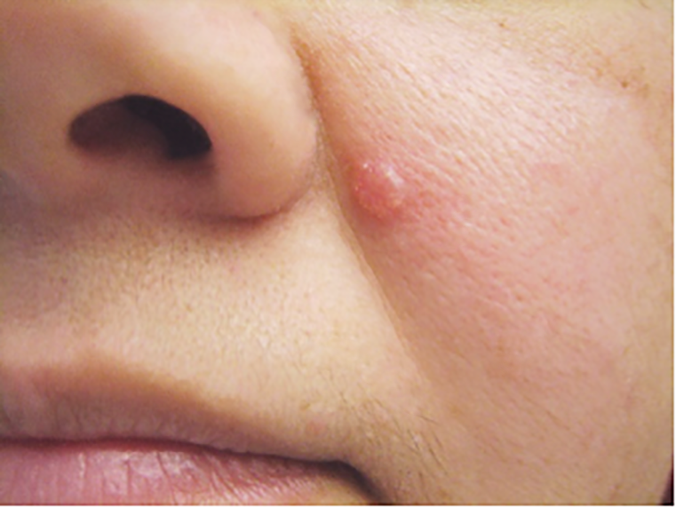Basal cell carcinoma is the most common form of skin cancer. Basal cell carcinoma originates in the skin cells called keratinocytes, classifying it as a non-melanoma skin cancer. Basal cell carcinomas are locally invasive; metastasis is rare. Basal cell carcinomas can affect anyone, but most commonly affect older males and often, light eyed, fair skinned, blonde or red haired individuals. They are also common in those that have a history of repeated sunburns or long term UV exposure, either in tanning beds or outdoors. Basal cell carcinomas can present in many different ways. However, the classic appearance of a basal cell carcinoma is a skin colored to slightly pink smooth pearly papule often in sun exposed areas like the face, chest, back, or arms.
WHAT CAUSES BASAL CELL CARCINOMAS?
There are many factors contributing to the development of basal cell carcinomas. The most common cause is UV light exposure, either via sunlight or tanning beds. There are certain genetic mutations that can predispose one to a basal cell carcinoma and these mutations can be triggered by UV light exposure. Specific genes can also be inherited from a parent or other family member that can contribute to the development of a basal cell carcinoma. The best way to protect yourself against these skin cancers as well as many other skin cancers is to avoid overexposure to UV light. This can be done with sunscreen and sun protective clothing.
TREATING BASAL CELL CARCINOMAS
There are a wide variety of treatment options for basal cell carcinomas based upon location and subtype of the skin cancer. The most common procedures include standard excisions or Mohs surgeries for those that are located in more sensitive areas, like the face and hands, where skin sparing is most important. Other procedures include electrodessication and curettage, also known as ED&C or a scrape and burn procedure. Photodynamic therapy, topical chemotherapy drugs, and radiation therapy can also be utilized to treat basal cell carcinomas.



